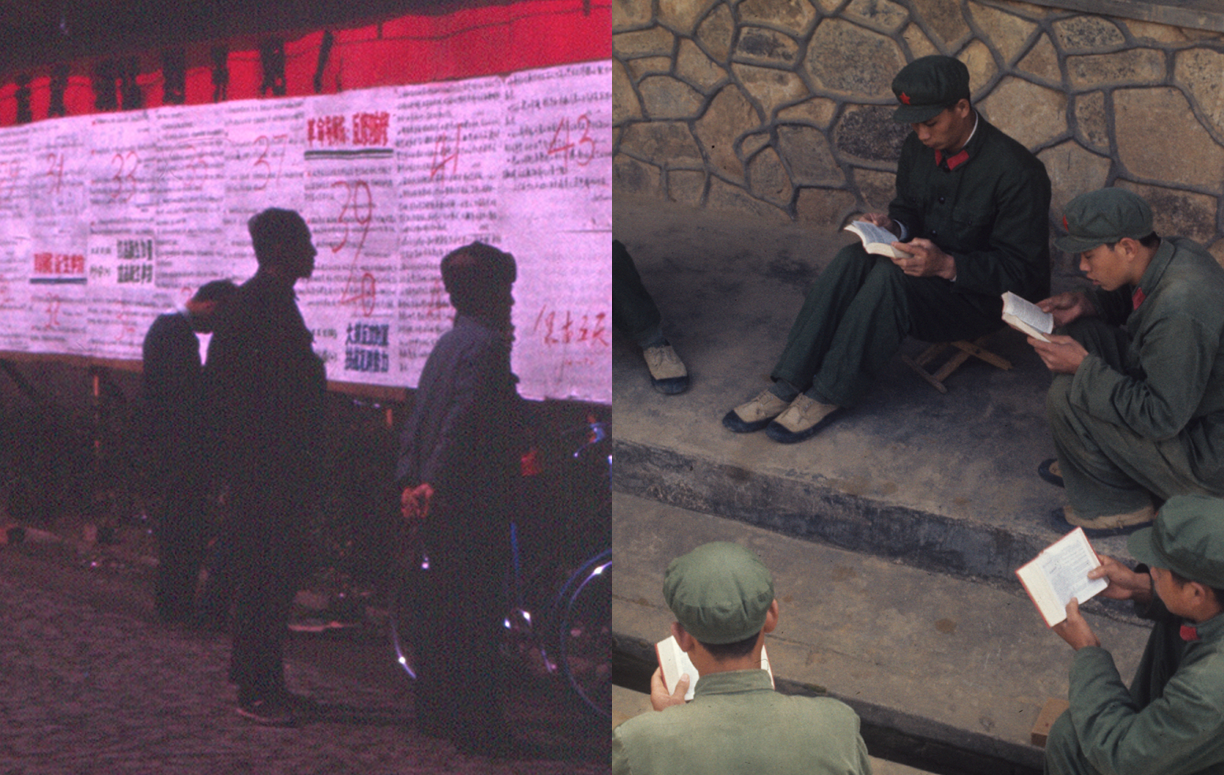VLS 8: Stealthy Reading and Collective Reading in the Mao Era
In the Mao-era, multifaceted strategies of reading were existing next to one another. The eighth session explores two such poles on the spectrum of reading acts. On the one side are hidden readings of suppressed or even forbidden texts during the radical phase of the Cultural Revolution. On the other side are officially organized group reading sessions in the mid-1970s. The first speaker, Eddy U (University of California, Davis) investigates stealthy reading of books, letters, poems, and other material practiced by victims of abuse during the Cultural Revolution for purposes of self-preservation. The second speaker, Damian Mandzunowski (University of Freiburg), analyses depictions of collective reading activities in posters and photographs created during a mass-reading campaign in 1975 to explore their integrative aspects. Both forms of reading are crucial to take into account when researching the history of reading in the Mao era. Jennifer Altehenger (Oxford University) will act as discussant.

Date: 2021-01-19
Time: 5 pm (Freiburg) / 11 am (New York) / 12 am (Beijing)
To attend: Signup once for your access code or, if you already have, directly join the session via Zoom.
Reading Literature, Reading People, and Reading Risk during the Cultural Revolution
Eddy U
Abstract:
Reading was an essential activity during the Cultural Revolution. Individuals read “big-character posters,” newspapers, and official instructions to assess danger and development. They read Mao’s works to show political devotion. They read their own confessional statement to weigh whether the content could help them fend off abuse. This paper investigates a different but no less important kind of reading for purposes of self-preservation—stealthy reading of books, letters, poems, and other material practiced by victims of abuse. Stealthy reading, which occurred between physical abuses, was crucial for restoring among the victims a sense of hope, control, and autonomy. Because the reading activities occurred surreptitiously, they inevitably involved cautious reading of people nearby and reading of potential risk of punishment. I identify three analytical different types of stealthy reading: reading as healing, reading for safety purposes, and reading for love. Evidence comes from recollections of abused writers.
I’ve Seen That Reading Group Before: Late Mao-Era Collective Reading Acts in Posters and Photographs
Damian Mandzunowski
Abstract:
Officially organized group reading sessions were a constant element in the system of political communication during the Mao era. Yet, how did ordinary women and men know what patterns of behavior were expected of them during such collective reading activities? Visual texts—films, comic books, posters and photographs—were of substantial aid. In this paper, I zoom in on posters and photographs created during the “Campaign to Study the Theories of the Dictatorship of the Proletariat 学习无产阶级专政理论运动” in early 1975. These materials, I show, were employed by state propaganda in order to re-activate memories from previous collective reading activities as well as to communicate to first-time collective readers too. The paper concludes that the relation between the visual depictions of collective reading acts to the formation of actual communities around the activity of collective reading was not only formative, but also sustaining.